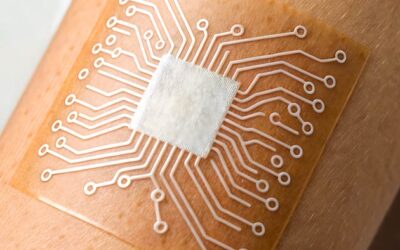by Mario Fucinari •
DC, CPCO, CPPM •
Typically, Medicare does not pay for maintenance care. Specific plans within the Part C Medicare Advantage plans may cover maintenance care. The plans are AARP® Medicare Advantage, UnitedHealthcare® Dual Complete, and UnitedHealthcare® Group Medicare Advantage. There may be additional UnitedHealthcare plans as well that have this benefit. Since Medicare Advantage plans are private contracts within the Medicare system, the benefits must be verified before services are rendered.
When the provider verifies benefits for any UnitedHealthcare Medicare member, they must request from the representative if the member has the “routine benefit,” and if so, how many routine visits are covered. If the member does have these benefits, they are there to utilize when the care is not deemed active treatment by the Medicare definition and is for pain, neuromusculoskeletal disorders, or nausea and are at the member’s discretion.
Essentially, these plans have a benefit that allows for a certain number of visits for non-active treatment. The altered coverage would be a variation where the UnitedHealthcare member’s care no longer meets Medicare’s “Active treatment” definition.
www,CMS.gov defines active care as:
Chiropractic Services – Active Treatment:
The patient must have a significant health problem in the form of a neuromusculoskeletal condition necessitating treatment, and the manipulative services rendered must have a direct therapeutic relationship to the patient’s condition and provide a reasonable expectation of recovery or improvement of function. The patient must have a subluxation of the spine, as demonstrated by an x-ray or physical exam. (CMS Publication 100-02, Medicare Benefit Policy Manual, Chapter 15, Section 240.1.3).
When the provider identifies a UnitedHealthcare Medicare Advantage member who presents for care that does not meet the Medicare definition of “active treatment,” the provider can bill that visit for the routine benefit if the member has benefits available. The routine benefit is not a managed benefit.
The typical scenario may be when a UnitedHealthcare member initially comes in for active chiropractic treatments. The provider would append the AT modifier to the CPT codes 98940-98941 and then bill that care to UnitedHealthcare. Once the patient improves with their care, the provider discharges them from active treatment. If the patient returns later to the office for care that no longer meets the Medicare definition of active treatment. The provider would bill that non-active treatment to the “routine benefit” and the visit to Optum. The doctor must choose on each visit if the care is active or routine, document it as such, and bill all services for that visit to the correct payer. Since Part C does NOT use the ABN form, you would bill active care as 98940-98942 with an AT modifier and maintenance care (routine benefit) as 98940-98942 with no modifier.
Dr. Mario Fucinari is a Certified Professional Compliance Officer, Certified Physician Practice Manager, Certified Insurance Consultant, and a Medicare Carrier Advisory Committee member. As a ChiroHealthUSA Speaker’s Bureau member, he travels throughout the year, speaking to audiences nationwide and sharing his chiropractic expertise and insights about documentation, billing, and coding issues. If you wish to have Dr. Fucinari as a speaker for your organization, contact ChiroHealthUSA. Questions and availability requests can be sent directly to Dr. Fucinari at doc@askmario.com.










 ▶︎
▶︎  Why is the Discount Challenge prize amount $15,024? Because that is the average “per-occurrence” fine for Medicare inducements. That’s not $15,024 per patient, that’s not per provider, that’s PER VISIT. Stinks, doesn’t it? To us, the prize amount is worth the investment if we can help our profession better understand proper discounting.
Why is the Discount Challenge prize amount $15,024? Because that is the average “per-occurrence” fine for Medicare inducements. That’s not $15,024 per patient, that’s not per provider, that’s PER VISIT. Stinks, doesn’t it? To us, the prize amount is worth the investment if we can help our profession better understand proper discounting.